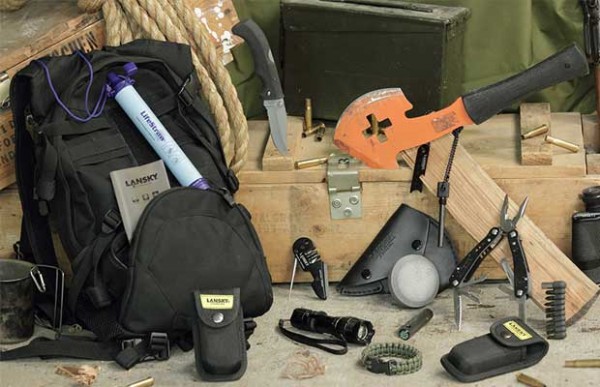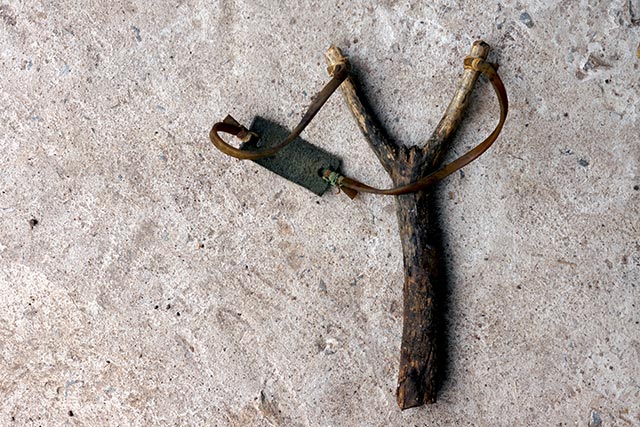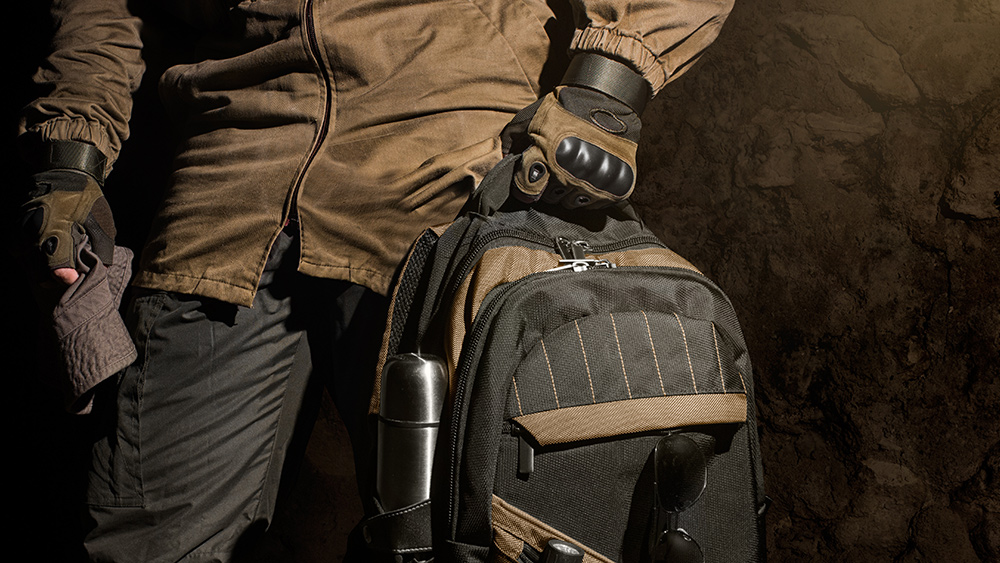10 Everyday items you can use for survival
11/08/2021 / By Divina Ramirez

Preppers know to have a survival kit stored somewhere in their homestead, bug-out shelter or bug-out vehicle. But when SHTF, you may find yourself in a situation with only the items in and around your home at your disposal.
In that case, knowing how to improvise tools or gear using only ordinary items may come in handy. Listed below are 10 such items that can be used for survival in an emergency: (h/t to Survivopedia.com)
1. Elastic hair bands
Elastic hair bands can be used for binding things inside your bug-out bag (BOB). They are also durable enough to be used for binding twigs or branches when making a temporary shelter. Using hair bands is also much faster and easier than tying knots using cordage. Plus, they can be removed and reused several times.
2. Scrap paper
Fire is extremely valuable in a survival situation. It provides heat and light, wards off predators, purifies water and cooks food. But finding and gathering suitable firewood can be difficult if you’re not anywhere near a wooded area. Fortunately, you can always repurpose scrap paper and old newspapers into fire “logs.”
Here’s a more detailed guide on how to make paper fire logs.
3. Petroleum jelly
Petroleum jelly is a popular petroleum byproduct used as a lubricant. It is also commonly used to heal scrapes or burns and remove makeup. In a survival situation, you can also use petroleum jelly as a fire accelerant. Simply dip cotton balls in petroleum jelly. Once ignited, the cotton balls will burn for about 10 minutes even if it’s rainy or windy. Store the cotton balls in a sealed container so they don’t dry out.
You can also use petroleum jelly to make a candle. Rub a cotton ball into a makeshift wick, then rub some jelly on it. Take a spoonful of the jelly and put it in a small dish or ashtray. Stick the cotton wick in the jelly on the dish, then light the tip of the wick. The fire should hold until all the petroleum jelly on the dish burns away.
4. Garlic
Mosquitoes can transmit potentially deadly diseases like dengue fever and malaria. They can be a big problem if you live near a body of water. Fortunately, you can easily repel them using garlic.
Follow these steps to make a mosquito repellent using garlic:
- Peel and crush four garlic cloves.
- Place the cloves in a closed container with just enough mineral oil to cover them.
- Let the cloves sit in the oil for a few days.
- Strain out the cloves, saving the mineral oil; mix it with a tablespoon of dish soap and a pint of water.
- Dilute two tablespoons of the mixture in a pint of water; pour this into a spray bottle; spray as needed.
5. Vines
In an emergency or survival situation, cordage has endless potential uses. In case of injury, it can be made into a tourniquet or sling. It can also be used to build shelter or a flotation vessel by using it to tie materials together. If you run out of cordage, use vines. They are surprisingly strong, durable and pliable.
6. Plastic bottles
Plastic bottles come in handy for making a life vest in a pinch. This has already been proven to work by a team of students from India. Here’s a simple guide on how to make it.
7. Branches
If you live somewhere with hostile, freezing winters, you can make snowshoes using branches. Simply cut thin branches from a tree or gather any fallen ones. You’ll need enough branches to make ovals that are one foot-wide and three foot-tall. Use cordage, duct tape or vines to tie them together. These form the outer edge of the snowshoes. Fill the middle of the oval by crosshatching it with paracord or vines.
Tie each snowshoe to the toe portion of your boots and you’re good to go. Snowshoes work by spreading out your body weight so that a larger amount of snow can support it, thereby keeping you from sinking.
8. Feminine hygiene products
Tampons, feminine pads and other feminine hygiene products can be used as bandages in an emergency. They will keep the wound clean and protect it from infection. Alternatively, you can also use clean underwear, old cotton shirts and plastic wrap. (Related: Survival first aid: What you need to suture a wound when SHTF.)
9. Sled
Wheelbarrows and hand trucks are ideal for gardening, scavenging and even bugging out on foot. But don’t be limited by these devices. You can also repurpose a snow sled into a cart for lugging your belongings. Alternatively, you can also use a toddler wagon, a baby stroller or even a furniture dolly.
10. Waste oil
Lack of heating will be a big problem in a post-SHTF world. Aside from paper fire logs, you can also use waste oil for heating. If there is no gasoline to be had and cars are not running, there will be an abundant supply of waste oil in those cars. You can either ask the owners for their waste oil or drain it from cars that have been abandoned. You can then feed that oil into a waste oil heater or stove. Here’s a guide on how to make that.
This is only the tip of the iceberg when it comes to everyday items you can use for survival. There are plenty of household objects with uses that might surprise you. Learn more about them at SurvivalGear.news.
Sources include:
Tagged Under: bug out, disaster, emergency, homesteading, off grid, preparedness, prepper, prepping, SHTF, survival, survival gear, survival kits, Survival Tips
RECENT NEWS & ARTICLES
COPYRIGHT © 2018 SURVIVALGEAR.NEWS
All content posted on this site is protected under Free Speech. SurvivalGear.news is not responsible for content written by contributing authors. The information on this site is provided for educational and entertainment purposes only. It is not intended as a substitute for professional advice of any kind. SurvivalGear.news assumes no responsibility for the use or misuse of this material. All trademarks, registered trademarks and service marks mentioned on this site are the property of their respective owners.




















